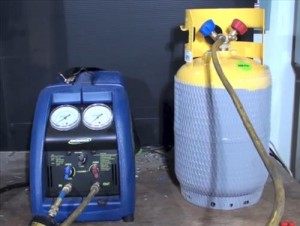
Refrigerant recovery from an HVAC system has been mandatory since 1995 when the EPA enacted the Montreal Protocol and required 608 certification of all technicians. Refrigerant must be recovered; otherwise, huge fines can be imposed.
The EPA allows for de-minimis release, or basically refrigerant released when connecting hoses to and from a unit or tank.
Items Needed for Refrigerant Recovery
- Recovery tank (Tanks with a yellow top are designated Recovery Tanks.)
- Recovery Machine.
- Refrigerant Scale.
The basic items needed are HVAC gauges to connect hoses between an HVAC system, recovery machine, and recovery tank.
How To Use a Refrigerant Recovery Machine
- The gauges should be turned off and connected to the high and low sides of the unit to be recovered from. Red goes to the high side; Blue goes to the low side.
- The yellow center hose goes to the suction line of the recovery machine-marked IN; a dryer should be placed here to help keep contaminants out.
- A single-hose goes OUT of the recovery machine to the recovery tank.
- Set the recovery tank on a scale to measure how much refrigerant is removed from the unit and avoid overfilling the recovery tank. By law, a tank can only be filled to 80 percent capacity.
- After everything is connected, the air is purged from the hoses. This is done by opening all the valves from the unit to the tank; only the tank valve should be off, then at the tank letting the air push out of the hoses. This will only be done for a few seconds. At the tank, unscrew the hose slightly until the air is heard escaping; after a second or two, re-tighten the connection to the tank. The refrigerant will be under pressure and push the air out of the lines.
- After the lines are purged, the recovery machine is ready to be turned on. The recovery tank valve, along with all other valves, should be open; the recovery machine can be turned on.
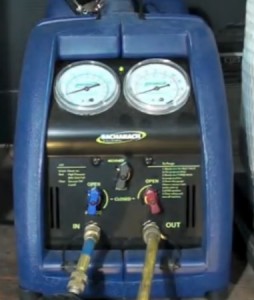
- At the HVAC gauges and recovery machine, you should see the pressure begin to drop as the refrigerant goes into the recovery tank. Be sure to watch the scale as not to overfill the recovery tank; a tank should never be filled past 80 percent of its capacity. The recovery machine should be working up to it reaches 0 psi on the low-side of the recovery machine. Don’t go below 0 psi, as if there is a leak, you will be sucking air. Most new recovery machines will turn themselves off automatically when they reach 0 psi.
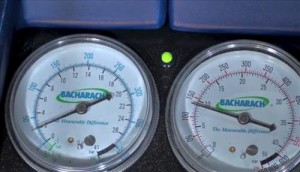
- After the recovery machine has reached zero psi, the recovery machine needs to be purged. To do this, turn the low-side blue valve to purge and the high red side to purge on the recovery machine. Then watch the gauges on the recovery machine. The low side will go from high to low, and the recovery machine should shut down when it is done.
- Close all the valves, especially the recovery tank, and you are done.
Pressure at the recovery machine will show when all valves are open.
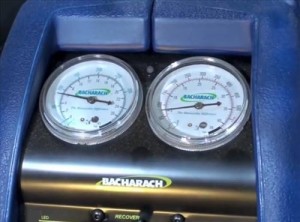
Purging the lines
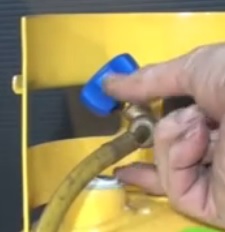
Summary
Using a recovery machine on an HVAC unit is necessary when a refrigerant is still in a system.
For example, if a compressor needs to be replaced, the refrigerant would need to be recovered first before replacing the component.
There is more that can be done to speed up the process of recovery, such as turning on the blower motor so the liquid doesn’t freeze getting quicker recovery times.
Refrigerants should never be mixed R-22, R134, R-410 should all be kept separate. Old refrigerant shouldn’t be mixed if the refrigerant is going back into the system it was removed from.
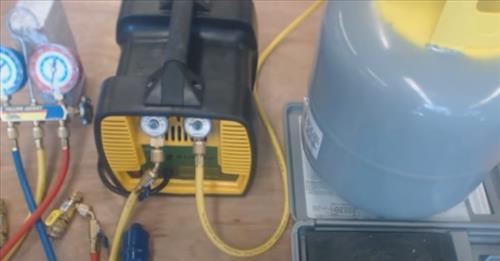
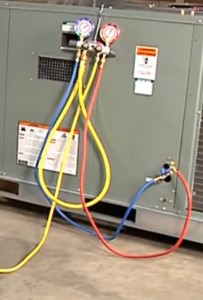
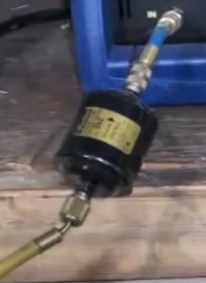
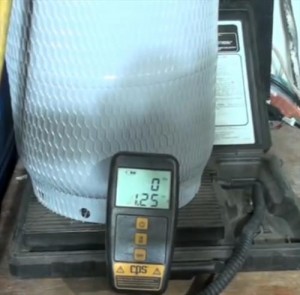
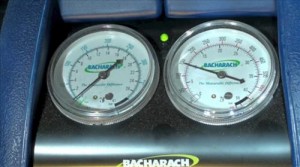
I from my experience is a mandatory to vaccum the gas cylinder before recovery starts.
Thank you for the video it was very helpful
Regards
A.S Stofile
I found a recovery tank the other day mark mix gases. R401A, R410A, R409A I wanted to be sure this is a tank that is able to be mix or not.
While doing recovery from empty 40kg cylinder to another 12kg cylinder head pressure increase after 2kg refrigerant recovered and the machine stops. Before I used to recovery 8kg refrigerant from different empty cylinders to the recovery cylinder 12kg.
Thanks so much for the explanation about the recovery process
Is recovered refregerant can be use again for charging an AC system..?
What about charging from the recovery cylinder?
You charge it like you would out of the refrigerant tank. The recovery tank becomes your supply tank in other words.
is there a way to test a recovery machine with out hooking it up to a system?